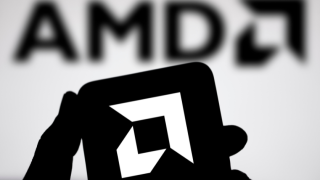“These guys have a very specific and clear idea of how they want things to be done – they choose their routes based on what’s needed for them at the time,” he added, hinting at a disinterest from the content players over a coastal preference.
However, Jorge Porto, director at SubCom, thinks that while there will be an increase of cables in the Pacific, driven largely by the OTTs, “there will be no gold rush” as we have seen in the Atlantic.
The age old Atlantic versus Pacific debate was centre stage during the second panel discussion during Capacity’s Subsea Americas event in December 2018, in which Arranz and Porto took part.
Simply put: “Brazil is the key driver of the market in the region,” explained Wagner Rapchan, CEO at Netell. “The country has approximately 160 million internet users and all the major Brazilian cities - Sao Paulo, Fortaleza and Rio de Janeiro are located along the east coast.”
“At what point does it make sense to continue to build cables in the Atlantic?” questioned Erick Contag, executive chairman of GlobeNet, indicating that new connectivity in the Pacific makes the most sense logically.
He did add a caution to the message by saying new routes in all these interesting and new places may look good but in reality it’s a lot more complicated than that.
“Looking at things on a 2D map, all these new and different routes make sense, but the geography is very different.”
Arranz also aired on the side of caution about the prospects of the replicating the same success across the Atlantic in the Pacific, saying: “Don’t over shoot it” adding that the markets are very different.
Rapchan seemed to echo the sentiment, adding: “There is a difference between the east coast and the west coast, not only that the population on the west coast is roughly one third what it is on the east coast – it’s where the population is located. On the west coast most of the population is concentrated in the south and on the east coast it’s concentrated in the north, affecting its landing points.”
Despite the sparring coasts on the continent, Latin America continues to move full speed ahead with it subsea cable projects. Towards the latter end of 2018, Hemisphere Cable Company (HCC) and NEC announced plans to build a new submarine cable called WASACE 1 connecting Europe to Latin America – across the Atlantic.
The 29,000km system will connect Forteleza, the Canary Islands and Seixal with additional branches in Cape Verde, Madeira and Casablanca. In addition, the new system will also include a network operations centre as well as a brand new data centre in the Canary Islands from which additional routes from West Africa, the Mediterranean and North America are also expected.
At the top of 2018, SubCom was chosen to build Google’s Curie subsea cable connecting Los Angeles, US, to Valparaiso, Chile, a future win for Latam’s burgeoning west coast. The four fibre-pair system will be the first new cable to land in Chile in close to 20 years, with a RFS date for some time later this year.
Also in the works is a planned 3,500km subsea cable along the entire Chilean coastline, to be built by national telecoms company, Gtd Teleductos. The system will land in the cities of Antofagasta, Arica, Iquique, La Serena, Puerto Montt, Talcahuano and Valparaíso. Though very few details of the project have been given the system has been given a completion date of 2020.
On the eastern side, three of the biggest future projects include to go into service include the 9,300km EllaLink cable that runs from São Paulo and Fortaleza in Brazil to Lisbon, Madrid and Marseille. Offering speeds of 72Tbps over four fibre pairs, the system went into construction with Alcatel Submarine Networks in January 2019.
Seaborn Networks’ SABR cable will be RFS in the year 2020 connecting Cape Town, South Africa, to Recife, Brazil. The system will interconnect with the company’s Seabras-1 cable in northeast Brazil creating one of shortest, lowest latency routes from Latin America to Africa.
SAEx1 is the first phase of the entire SAEx 25,000km, six-fibre-pair, 72Tbps subsea cable connecting Africa and Asia to the Americas. SAEx will land at Fortaleza, Brazil, the islands of Ascension and St Helena and Cape Town, South Africa. It will be RFS in Q1 of 2021.
All these systems have the ability to affect the countries where they land, driving greater digital economy and improving the lives of its citizens through increased connectivity. Encouraging further investment to the region regardless of positioning is the key focus and as with all other places, that is a task within itself.
“It’s important to understand that you don’t disrupt infrastructure in the same way you disrupt software. Infrastructure is long-term that requires big money upfront,” said GlobeNet’s Contag.






